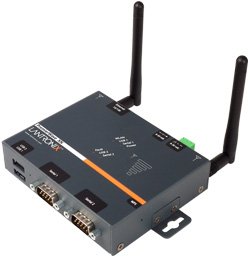Navigating Your Large Workbook
Efficiently navigating through a workbook can be challenging, especially when working with large workbooks or worksheets. This document includes tips and shortcuts for navigating in Excel 2007.
Keyboard Shortcuts
Learning keyboard shortcuts will save you time when working with your workbook. The following table displays some common shortcuts and their keyboard combinations.NOTE: If an action you want to use does not have a keyboard shortcut, you can create a macro for it.
| Keyboard shortcut | Function |
|---|---|
| [Ctrl] + [Page Down] | Move to the next sheet |
| [Ctrl] + [Page Up] | Move to the previous sheet |
| [Ctrl] + [F6] | Move to the next open workbook |
| [Ctrl] + [Shift] + [F6] | Move to the previous open workbook |
Using the Go To Command
To move to a specific cell of the worksheet, you can use the Go To command. The Go To command is also useful when moving between ranges. For information on how to add a range, refer to Referencing Cells with Names: Creating Range Names.- Select the Home command tab
- In the Editing group, click FIND & SELECT
 » select Go To...
» select Go To...
OR
Press [F5]
The Go To dialog box appears.
- In the Go to scroll box, select a range name
ORIn the Reference text box, type a cell location - OPTIONAL: For advanced Go To options
- Click SPECIAL
- Select an option
- Click OK
The Go To dialog box closes and the selected cell range or cell location is highlighted.
Using Screen Options
When working on large worksheets, you may need to see different parts of the worksheet at once. Excel offers two ways of doing this: Freeze Panes and Split Screens.Freezing Panes
Excel's Freeze Panes feature lets you keep specific rows and columns visible while scrolling through the worksheet. You can freeze rows, columns, or both.- OPTIONAL: To freeze a specific range of rows and/or columns, click the cell immediately below and to the right of the last cell in the range you want frozen
HINT: The selected cell functions as an indicator, for which all cells above and left of it will be frozen. The selected cell will not be included in the range. - Select the View command tab
- In the Window group, click FREEZE PANES

- To freeze the selected range of cells, select Freeze Panes
To freeze the first row of the worksheet, select Freeze Top Row
To freeze the first column of the worksheet, select Freeze First Column
The selected pane is frozen.
Unfreezing Panes
- Select the View command tab
- In the Window group, click FREEZE PANES

- Select Unfreeze Panes
All panes are unfrozen.
Splitting Screens
The Split Screen option is useful when you want to see separate sections of one worksheet at the same time.- Select the cell where you want the split to occur
HINT: The split will occur from the upper left corner of the selected cell. - Select the View command tab
- In the Window group, click SPLIT

The workbook is split into four sections. - OPTIONAL: To resize the panes
- Click and hold the border you want to resize
- Drag the border to your preferred location
- Release the mouse button
The pane is resized.
Uniting Screens
- From the View command tab, in the Window group, click SPLIT

The workbook refreshes to display a single pane.
Make sure to let me know in the comments below or on our Facebook page how you've got with it or Do you have any questions

No comments:
Post a Comment